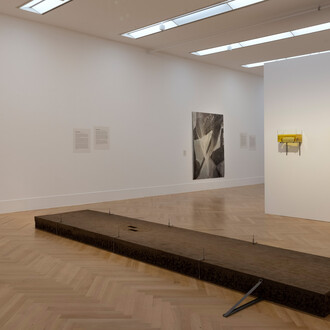As places of longing, California and San Francisco in particular have always stood for the dreams of a "better life": dreams of prosperity and abundance, of other (at times utopian) social orders, innovative life styles, creative artistic perspectives, and new technological horizons. Both the Asian-Pacific region in the west and Europe in the east have had a lasting impact on San Francisco.
The Bay Area extends a magical embrace that has made generations of outsiders and outcasts feel at home.
(Lawrence Rinder, Director of the Berkeley Art Museum and Pacific Film Archive)
Time and again, global impulses have emerged from San Francisco: from the Gold Rush of the 19th century to the great social and political movements of the 20th century. Today Silicon Valley is another global center of attraction in the San Francisco Bay Area.
The exhibition draws a many-faceted portrait of the city of San Francisco over four centuries. It touches upon important global issues of our time, especially those of migration and displacement, and recognizes San Francisco as a place whose pluralistic identity is constantly being renegotiated to this day. In three sections the exhibition is dedicated to the dreams and realities of the people of the San Francisco Bay Area, past and present.
Global Dreams and Individual Hopes
California—a place with a particularly favorable climate—was home to over 70 indigenous peoples, but since the 16th century the colonial powers of England, Spain, and Russia were fighting for the rich natural resources of the country. For the indigenous population this resulted in forced conversion to Christianity, economic exploitation, displacement, and death.
Founded in 1776 under the reign of the viceroyalty of New Spain, the Mission San Francisco de Asís, the military base (Presidio) set up for its protection, and the small port of Yerba Buena formed the nucleus of today's San Francisco. Further north on the Pacific coast, Russian fur traders established the colony Ross in 1812. The Mexican War of Independence put an end to Spanish colonial rule in 1821, turning California into a Mexican province until it fell to the United States in 1848.
From 1849 the Gold Rush attracted global migration flows to the Golden Gate. San Francisco grew into a metropolis in record time. Hundreds of thousands of immigrants from Europe and Asia shaped the image of the city, whose cultural diversity, however, must not obscure the ethnic and social hierarchies that prevailed from the outset. Already in the 1850s 80 percent of personal property and real estate in San Francisco were in the hands of less than five percent of its White population.
Dreams of Survival and the American Mainstream
The devastating earthquake of 1906 caused a sudden setback to San Francisco's boom. To this day California's geographical location in one of the world's most active seismic zones poses a permanent threat. Moreover, the rapid development of Northern California's rich resources since 1850 has been accompanied by a significant overexploitation of nature, which continues to be felt today.
Especially the indigenous inhabitants of the region had fought for their physical and cultural survival since the advance of the Europeans. The fate of Ishi (1860–1916), "the last Yahi," is reminiscent of the expropriation, expulsion, and murder of the indigenous peoples of California, but it also illustrates their persistent cultural self-assertion.
In 1915 the San Francisco World Fair celebrated the completion of the Panama Canal the year before and the rebuilding of the city. Despite the war and the Great Depression the confidence in technological progress and in consumer society based on religious-conservative values remained part of the American self-image. In 1939 a second World Fair celebrated not least the construction of the Golden Gate Bridge (1937).
The internment of some 120,000 Japanese and Japanese Americans during the Second World War is one of the lesser-known chapters in American history, but illustrates all too clearly that the "land of opportunity" was not equally open to everyone.
Countercultures and Virtual Dreams
The political movements, alternative lifestyles, artistic innovations, and technological revolutions that originated in the San Francisco Bay Area in the 20th and 21st centuries had and continue to have global implications.
The radical break of the Beat poets with the social norms of the 1950s paved the way for the following decades, in which student protests and the Hippie Movement achieved global appeal. The African American Civil Rights Movement, Native American activists, and the LGBTQ Movement successfully demanded equal rights and participation in society. Today the billion-dollar business with our virtual dreams has turned Silicon Valley in the south of the San Francisco Bay Area into a new magnet for immigration.
San Francisco is still a city of great attraction today and continues to provide progressive impulses, for example with regard to emancipatory or ecological social issues. It was and remains a place of longing—for the creative people, the dissenters, and all those hoping to achieve their dreams of a better life there. And yet San Francisco—like many other cities around the world—is a place whose pluralistic identity time and again raises new questions.
















